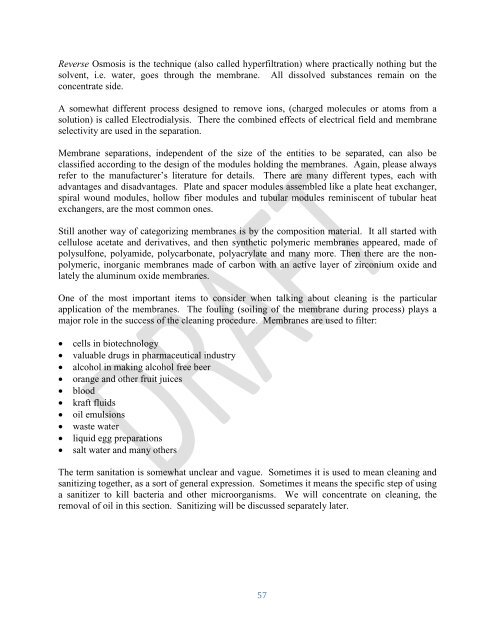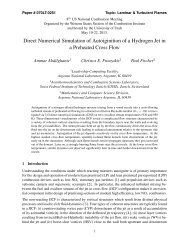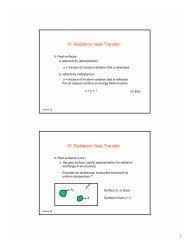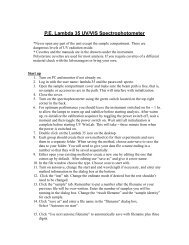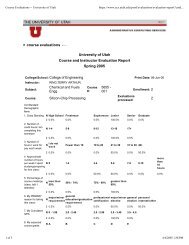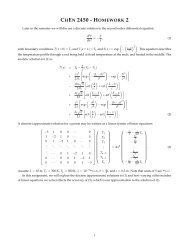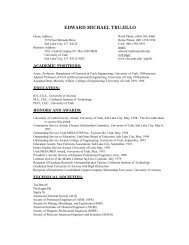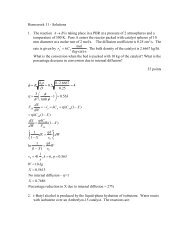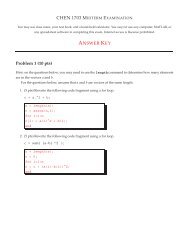Standard Operating Procedure - Ultrafiltration - Department of ...
Standard Operating Procedure - Ultrafiltration - Department of ...
Standard Operating Procedure - Ultrafiltration - Department of ...
- No tags were found...
You also want an ePaper? Increase the reach of your titles
YUMPU automatically turns print PDFs into web optimized ePapers that Google loves.
Reverse Osmosis is the technique (also called hyperfiltration) where practically nothing but thesolvent, i.e. water, goes through the membrane. All dissolved substances remain on theconcentrate side.A somewhat different process designed to remove ions, (charged molecules or atoms from asolution) is called Electrodialysis. There the combined effects <strong>of</strong> electrical field and membraneselectivity are used in the separation.Membrane separations, independent <strong>of</strong> the size <strong>of</strong> the entities to be separated, can also beclassified according to the design <strong>of</strong> the modules holding the membranes. Again, please alwaysrefer to the manufacturer’s literature for details. There are many different types, each withadvantages and disadvantages. Plate and spacer modules assembled like a plate heat exchanger,spiral wound modules, hollow fiber modules and tubular modules reminiscent <strong>of</strong> tubular heatexchangers, are the most common ones.Still another way <strong>of</strong> categorizing membranes is by the composition material. It all started withcellulose acetate and derivatives, and then synthetic polymeric membranes appeared, made <strong>of</strong>polysulfone, polyamide, polycarbonate, polyacrylate and many more. Then there are the nonpolymeric,inorganic membranes made <strong>of</strong> carbon with an active layer <strong>of</strong> zirconium oxide andlately the aluminum oxide membranes.One <strong>of</strong> the most important items to consider when talking about cleaning is the particularapplication <strong>of</strong> the membranes. The fouling (soiling <strong>of</strong> the membrane during process) plays amajor role in the success <strong>of</strong> the cleaning procedure. Membranes are used to filter:• cells in biotechnology• valuable drugs in pharmaceutical industry• alcohol in making alcohol free beer• orange and other fruit juices• blood• kraft fluids• oil emulsions• waste water• liquid egg preparations• salt water and many othersThe term sanitation is somewhat unclear and vague. Sometimes it is used to mean cleaning andsanitizing together, as a sort <strong>of</strong> general expression. Sometimes it means the specific step <strong>of</strong> usinga sanitizer to kill bacteria and other microorganisms. We will concentrate on cleaning, theremoval <strong>of</strong> oil in this section. Sanitizing will be discussed separately later.57


